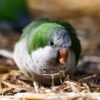- How Long Does A Quaker Parrot Live? - 17 May 2024
- 4 Hacks on Keeping Your Home Clean With Pets - 28 March 2024
- 5 Things to Know Before Bringing Home a New Kitten - 26 March 2024
Ducks do not have teeth but they’ve found a fascinating way to eat food. They rely on a system of comb-like structures called lamellae that work like ducks have teeth but aren’t made of hard enamel. Lamellae are located inside the edges of a duck’s bill and are shaped according to each species’ specific diet. They help filter food from mud and water when dabbling in water and assist with a bird’s gizzard to grind up large pieces of prey for digestion.
Table of Contents
Evolutionary History of Ducks
While ducks do not have teeth in the sense that mammals have them, these fascinating birds have evolved unique structures and specialized bill structures that allow them to process food efficiently without teeth. For example, the tiny serrations along the edges of a duck’s bill might look like teeth but these are not actual teeth at all. Rather, they are comb-like structures known as lamellae. Lamellae are made of keratin, the same material that makes up our own hair and nails as well as animal hooves and feathers. Lamellae line the inside of a duck’s bill and act as filters, trapping nutrient particles and plant material while allowing water and other unwanted materials to pass through.

As a result of their specialised bill structures, ducks are able to consume a wide variety of aquatic plants as well as insects and snails. Furthermore, ducks can also use their bills to preen their feathers and even as part of courtship rituals. Since ducks cannot chew their food, they swallow it whole instead. Once the food enters their gizzards, it is ground up by rocks in a manner similar to how washing machines grind up clothes.
The Anatomy of Duck Bills
Many people have wondered, when looking at a duck in its natural habitat, what exactly it’s up to with that strangely shaped beak. The structure, called a duckbill, helps the bird eat and other tasks, including preening feathers and courtship displays. It contains a number of structures, which are most visible on the inside edge of the bill, where there are a series of serrated mouth parts that look like teeth. These are actually lamellae, and the number of them varies among duck species.

Lamellae are tooth-like structures that help ducks strain their food as they eat, but they don’t do the same job that mammalian teeth do. They’re made of keratin, which is also found in human nails, animal hooves, and feathers. This type of keratin isn’t as tough as enamel, but it serves just fine for this particular type of structure. Despite the presence of lamellae, ducks don’t chew their food. Instead, they use their tongues to manipulate the food in their bills and to reposition it as they prepare to swallow. The bills themselves help to filter out water and other unwanted substances, while a bird’s digestive system, including gizzards, grinds up the rest of the food for digestion.
Dental Adaptations in Ducks
Ducks don’t have teeth to chew with, but they are able to process food effectively without them. This is another example of nature’s ingenuity and adaptation over time, enabling ducks to thrive across diverse habitats. To do so, they’ve evolved special features in their bills to strain nutrients from water and mud. Often, they even swallow grit to help grind food into smaller pieces before it moves on to their stomachs for digestion. Those tiny serrated structures on the edges of a duck’s bills that look like teeth are called lamellae.
They are made of keratin, the same material that makes up hair and nails. While these pseudo-teeth don’t provide any function similar to teeth in mammals, they do make it possible for ducks to eat a varied diet of nuts, mollusks, seeds, fruits, insects, grains, and other foods. They also vary in size and shape between different duck species based on their particular dietary needs. For instance, dabbling ducks tend to have long, thin lamellae that allow them to filter small particles from the water, while diving ducks have stubbier ones more suitable for gripping slippery prey.
Feeding Behavior of Ducks
Ducks have a wide-ranging diet of plant vegetation, fish, mollusks, insects, seeds and other grains. Their lack of teeth does not prevent them from enjoying this diverse array of food, and the varying shapes and sizes of their bills play an important role in preparing and swallowing the different types of foods. If you have ever observed a duck eating, you may have noticed what look like tiny serrated teeth lining the outer edges of their bills. These are actually comb-like structures called lamellae, which function as a sort of filter when the duck is eating. They also work a bit like baleen whales, straining water and mud from the food the duck is swallowing.
The elongated shape of the duck’s bill helps it crush and manipulate food with a similar effect to teeth, but without the strength to pulverize tough materials such as shellfish or hard-shelled seeds. Lamellae also help the duck strain out the edible parts of plant material while letting the excess water and mud pass through. The broken-down food then moves to the gizzard, where it is crushed and ground by muscles before entering the digestive tract.
Teeth-Like Structures in Ducks
Upon first glance, the serrated edges of a duck’s bill may appear to resemble ducks have teeth. However, these ridges, which are called lamellae, don’t function as teeth do in mammals. Instead, they filter out mud and other impurities while the duck forages. The lamellae also help the birds maneuver food within its beak before swallowing.
The ridges are not made of enamel; they’re a type of keratin, which is the same material that makes up a bird’s beak and feathers. As for the rest of a duck’s digestive system, the absence of teeth doesn’t prevent it from eating a wide range of plant matter, insects, and small fish. This diverse diet is possible thanks to a specialized organ known as the gizzard. Similar to the way a mammal’s stomach grinds its food for digestion, grit collects in a bird’s gizzard, where it rolls around and smashes up small bits of food until it’s ready for the next step in the digestive process. The gizzard also helps break down hard items such as bones and cartilage. The gizzard is a marvel of nature’s design, as it serves a very important function while still being quite small. In fact, it occupies just a tiny fraction of a duck’s overall body weight.

Comparisons with Other Waterfowl
As anyone who’s strolled around a lake or park knows, ducks are very popular. These waterfowl are known for their vibrant colors, quacking sounds, and unique bill shapes. They are also known for munching on various nuts, mollusks, insects, grains, seeds, and other foods. But what many people don’t realize is that, unlike wolves, tigers, sharks, and humans, ducks don’t have teeth. Instead, they have a series of serrated mouth parts called lamellae that look like teeth but aren’t used for chewing in the same way that mammalian teeth are used to break down food.
The number and arrangement of these ‘pseudo-teeth’ varies between different species, but they all serve the same purpose: to filter out water and other substances from the food they eat. They can be compared to the comb-like structures on the edge of a whale’s blowhole that act as a sieve to trap seawater and other food particles, allowing only water and some food to pass through. In addition to serving as a filter, these ‘pseudo-teeth’ help to hold onto slippery prey like snails and fish. They also allow the duck to feel what they’re eating, as their specialized bills are extremely sensitive to touch.
How Ducks Digest Food
Ducks are omnivorous foragers with diets containing seeds, nuts, fruit, insects, crustaceans, grains, fish, and mollusks. Unlike many mammals that chew their food, however, ducks swallow it whole and bypass much of the mouth area altogether. This is made possible by the specialized structure of their bills and by the presence of comb-like structures known as lamellae. Lamellae might look like ducks have teeth but, despite their resemblance to such structures, they don’t function as such. Instead, they act as a kind of strainer to remove inedible waste (like mud and decaying leaves) from the water while simultaneously helping the bird grip and manipulate food within its bill.
After the food is strained, it’s swallowed without any chewing, and passes to an organ known as a gizzard where it’s ground into smaller pieces that can be digested. The gizzard also uses grit that the duck has swallowed to rub against the food, further breaking it down before it’s finally digested. It’s an incredible example of how nature has devised efficient and effective ways to compensate for the absence of teeth in these fascinating animals. It’s also a testament to the amazing flexibility that birds have when it comes to surviving in diverse environments.
Final Thoughts
Ducks do not have teeth in the same way that mammals do, but they have specialized bill structures that help them filter and manipulate their food. The blog explains the different parts of a duck’s bill, such as the lamellae, the nail, and the grin patch, and how they function in different types of ducks. The article also clarifies that ducks do not chew their food, but swallow it whole or crush it with their bills. The article ends with a fun fact that some ancient birds, such as the Hesperornis, did have true teeth, but they went extinct along with the dinosaurs.

















